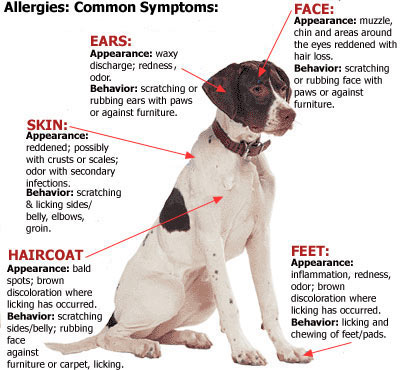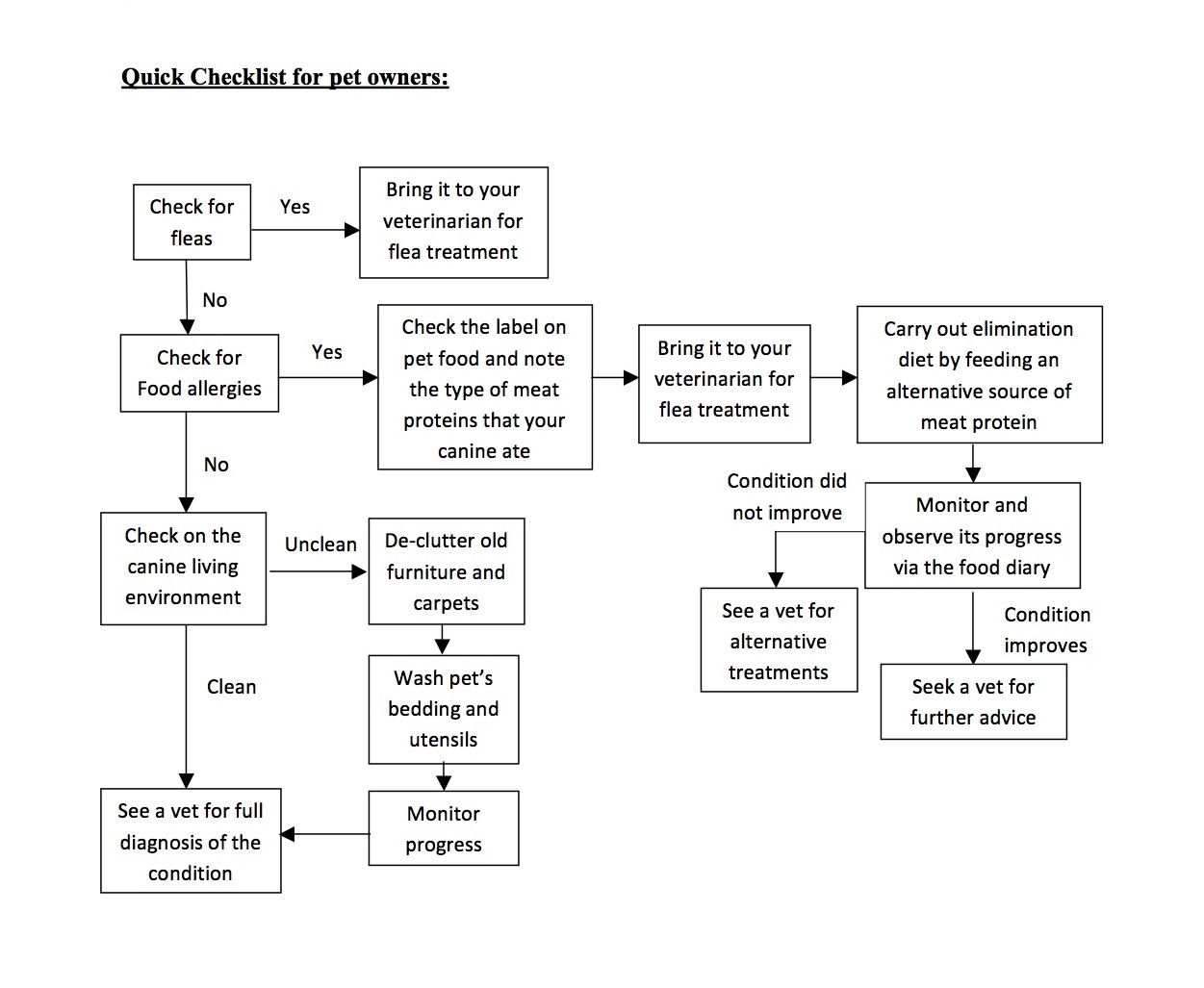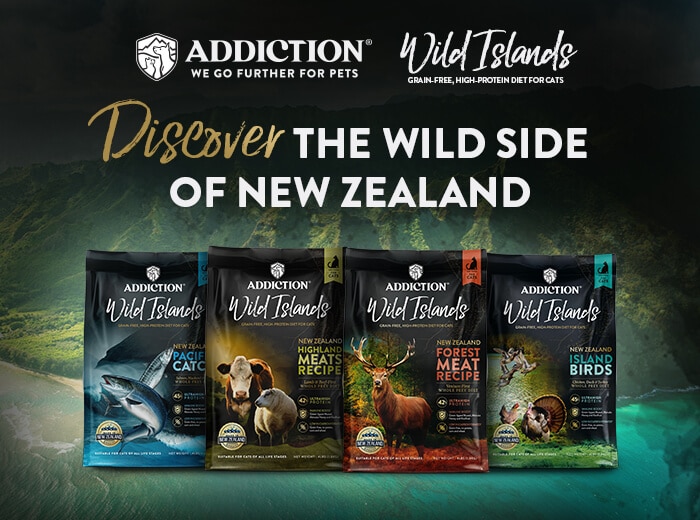Now that we know what a food allergy IS, let’s talk about what CAUSES a food allergy.
To date, common food ingredients responsible for allergies are chicken, beef, dairy products, pork, lamb, fish, eggs, corn, soy, oats and grains (wheat, whey). In addition, corn and wheat allergies are now showing up as common allergens the same way they’re showing up for human. They are often used as cheap fillers in pet foods and can accumulate and cause an allergic reaction in your pet’s body. Always read the label on your pet’s food to see if corn or wheat is listed as one of the first few (primary) ingredients in the list.
Contrary to popular belief, feeding the same food to a dog everyday and year after year is exactly the reason why dog allergies develop, especially allergies to meat proteins. If an animal repeatedly eats the same type of food, its system begins to reject those ingredients as it’s body has been overexposed to them. Providing a varied diet for your animal, just as with humans contributes to their optimal health. This is why we recommend a rotation diet, where you switch your pet’s food often. It helps maintain friendly bacteria in the gut and overall digestive health.
Usual remedies
Switching foods to one with a different source of protein other than the one you have been feeding is one feasible solution. This is to avoid the usual meat protein that is triggering the immune response. Usually, a high quality meat source which you have never fed your pet before could be used as a primary ingredient. Diets containing venison, kangaroo, duck, fish, rabbit, lamb, modified soy or modified chicken livers etc. as the novel protein sources are all commercially available. Many of these diets use limited ingredients so as to reduce antigenicity. In addition, many of the commercial hypo-allergenic diets may contain an increased amount of omega 3 fatty acids or decreased omega 6 to omega 3 fatty acid ratios to decrease the formation of inflammatory mediators in the skin.
Let’s talk for a quick second about omega fatty acids. Essential fatty acids are a form of polyunsaturated fat that are necessary for all pets’ good health. However these cannot be synthesised by dogs and cats and must therefore be supplied in their diet.
Omega 3 and 6 fatty acids have been found time and again to play a vital role in the management of allergies and inflammatory skin conditions by building up a healthy skin barrier, maintaining healthy coat and skin, supporting the proper development of the nervous system and visual acuity, regulating the blood flow to body tissues, aiding in clotting after an injury, and helping your pets’ immune system respond to injury and infection. The ratio between omega 6 and omega 3 fatty acids can be important as well.
A remedy sometimes overlooked is “The elimination diet. We will delve into this exclusive diet later in this article. First, here’s a quick checklist and an example of a food diary below to provide pet owners with an overview of monitoring the progress of the diet and the allergic reactions:
Quick Checklist for pet owners:
Use this chart to track the foods your animal is eating every day and if the symptoms change. Make sure to include any treats, table scraps or ‘unintentional’ meals. The butter they stole off the counter? Write that down. The Cheerios from your toddlers breakfast? Yep, make sure that’s in there. Tracking your pet’s intake can really help narrow down what your pet might be having a problem with and may save you expensive visits to the vet later. Be very clear about your pet’s symptoms. Where are they on their body? How many hours after eating did this occur? If you are treating the symptoms, put the treatment under the ‘action’ column. This should include any bathing, topical sprays or medications.
Sample Food Diary:














